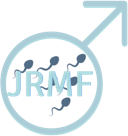Male Fertility Tests
There are a number of different male fertility tests that can be used to determine the severity and cause of a man’s fertility problems.
Semen analysis
We always like to have more than one semen analysis. This is because there is much biological variation in sperm production, and we cannot be sure that one or even two semen analyses reflect the real situation.
Appropriate testing and accurate interpretation of semen analysis results is vital to achieve a reliable diagnosis for male factor infertility. A fully comprehensive semen analysis is performed by an experienced embryologist with a fertility background.
Further tests
Hormonal blood tests (FSH, LH, Testosterone) are usually helpful.
A genetic blood test is often recommended for patients that are suffering from oligospermia (low sperm count in the semen) or azoospermia (no sperm in the semen). This is also known as the karyotype and Y-micro-deletion studies, which look specifically at the “Y” or male chromosome.
What about more sophisticated or unusual tests?
Over the past three years, we have been looking very carefully for signs of infection and inflammation in the male genital tract (this is the pathway that the sperm take from the testicles, all the way to the urethra tube in the penis). We will often do a test for reactive oxygen species (ROS) chemicals, and a special urine test looking for low levels of bacteria (a PCR test).
In some, but by no means all cases, we can look more closely at the DNA and chromosomes in the sperm themselves (DNA fragmentation and aneuploidy tests).
We have also started to look at novel hormone tests (the Anti Mullerian Hormone or AMH) in men with Azoospermia, which might help to predict positive sperm retrieval.
Male fertility tests
The tests support diagnosis and determining the best course of treatment by providing a detailed description of the overall appearance including:
- The number of sperm present. This is important as sperm have to travel an exceptionally long and convoluted distance from the vagina into the Fallopian tubes to meet the egg. If the count is too low, the chances of even one sperm finding the egg is going to be very much reduced
- The percentage of sperm that are moving and analysis of how progressively motile these sperm are (motility). Sperm have to be good swimmers, moving rapidly and in straight lines if they are to be successful in reaching the egg
- The shape of the sperm (morphology) with a detailed breakdown of defects. If sperm are an abnormal shape this can decrease their ability to fertilise an egg
- MAR antibody test (IgA/IgG). If antibodies are present this can cause the sperm to stick together and reduce the ability of the sperm to fertilise an egg
- Presence of other cells as a marker of inflammation or infection as this may reduce fertility
The further outside the normal range your values are, the more difficult it may be to conceive.
Finally, because we believe that treating varicocele (distended veins, like varicose veins, in the scrotum) is helpful, we may request an ultrasound scan of the testicles.
Testicular Mapping Procedure
This is also known as the fine-needle technique and I believe that it has an important place in diagnosis before the more invasive microdissection treatment is undertaken.
It is a non-surgical, minimally invasive procedure that can accurately diagnose.
The fine-needle testicular mapping procedure (FNA) was described by Paul Turek, from San Francisco, nearly 20 years ago. Most North American Urologists, and nearly all those from Europe, have not perceived much benefit, and tend to recommend micro-TESE in all cases.
We have taken a different approach, particularly in critical cases (low levels of Testosterone and hypogonadism, testicles which have previously been operated upon, and men who have failed to produce any sperm after medical treatment). We recommend FNA as a diagnostic procedure before committing to a micro-TESE.
By taking this approach, we can more confidently predict a successful micro-TESE with fewer complications. We can also time the sperm retrieval (micro-TESE) to be synchronised with egg collection, because we can be more certain that we will retrieve sperm.
The Fine-Needle Aspiration (FNA) procedure is not a sperm retrieval; it is designed to tell us whether or not there are any areas of sperm production in either testicle (spermatogenesis) and, if such areas exist, their precise location.
The procedure usually requires a light general anaesthetic, or sedation, in combination with generous amounts of local anaesthesia. 18 separate specimens are taken through a narrow-gauge needle from 18 different sites in each testicle.
Recovery is surprisingly quick. Most men feel little pain and are able to return to work in 2-3 days. In the first 150 cases undertaken in the past three years, only one patient had pain and discomfort for more than two weeks, and fortunately these symptoms eventually subsided. An analysis of our presentation of the first 72 cases can be found in the information section.
Although the FNA procedure itself is relatively straightforward, the majority of the ‘work’ associated with it is the highly technical assessment of the 36 slides, or samples, which require expert and time-consuming scrutiny by a Consultant skilled in Cytopathology. Results may take up to 6 weeks.


0 Comments